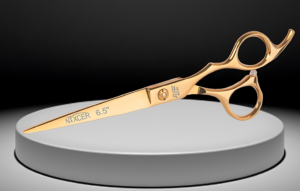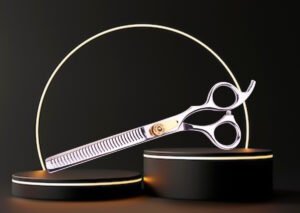As a hairstylist, having the right tools is essential to deliver high-quality results, and precision scissors are one of the most valuable assets in your toolkit. However, simply owning them isn’t enough. Using precision scissors effectively requires careful planning, a steady hand, and a good understanding of different hair types and styles. In this post, we’ll discuss how to plan your haircuts with precision scissors for clean, accurate, and professional results.
Understanding Precision Scissors
Precision scissors are designed for cutting with accuracy, making them ideal for styles that require sharp lines and defined shapes. Their blades are finely crafted and sharpened to make clean cuts, which is crucial for achieving polished hairstyles like bobs, pixie cuts, and other styles that demand exactness. These scissors are typically shorter than regular cutting shears, providing better control when cutting close to the scalp or when performing detailed work.
Why Planning is Key
Before diving into a haircut, it’s essential to have a clear plan. Every client has different hair types, lengths, and personal style preferences. Planning helps you avoid mistakes and ensures that your client leaves the chair satisfied. Here’s how to strategize your haircut:
1. Consult with the Client
The first step in planning a precise haircut from professional hair cutting scissors is a thorough consultation with your client. Discuss their desired style, how much length they want to remove, and what type of finish they’re looking for (sharp, soft, or textured). Precision cutting is especially important for styles with well-defined shapes, so be clear about their expectations before you start cutting.
2. Analyze the Hair Type and Texture
Different hair types behave differently when cut. Fine hair requires different handling than thick or curly hair. For example, fine hair can show blunt lines very clearly, so precision scissors work well for achieving crisp, sharp edges. On the other hand, thick or curly hair may require more sectioning and careful attention to layering.
Tip: Always analyze how the hair naturally falls and consider the direction of growth before making your first cut. This will help you map out your cutting strategy.
3. Choose the Right Technique
Precision scissors are excellent for a variety of advanced cutting techniques, but selecting the right one is crucial. Below are some techniques that work best with precision scissors:
Blunt Cutting: This technique involves cutting hair straight across, resulting in a clean and sharp look. It is commonly used for bobs or one-length cuts and works well for fine or medium hair types. Precision scissors ensure the lines are even and polished.
Point Cutting: For adding texture while maintaining sharpness, point cutting involves cutting into the ends of the hair at an angle. It is perfect for softening layers and creating a more natural, blended effect.
Slide Cutting: Slide cutting allows you to create soft layers and remove bulk by sliding the blades down the length of the hair. Precision scissors give you the control you need to ensure that the results are smooth and uniform.
4. Section the Hair
Sectioning is a crucial part of planning a haircut, especially when using precision scissors. Dividing the hair into manageable sections ensures that you maintain control throughout the process and achieve even results. Precision cutting works best when each section is clearly defined and carefully handled. Start by creating clean partings and section off areas you are not cutting immediately.
Tip: Make sure the tension in each section is consistent so that the hair lies flat as you cut. Uneven tension can lead to uneven lines, which will detract from the clean look precision scissors are designed to create.
5. Focus on Detail
One of the main advantages of precision scissors is their ability to handle detailed work. When cutting around the ears, creating sharp fringes, or refining the nape of the neck, precision scissors help you cut close without compromising accuracy. This is especially important when working on shorter hairstyles that require attention to every angle.
Tip: Take your time with detailed work, especially around tricky areas like the hairline or fringe. The key to a polished look is consistency and evenness throughout the cut.
6. Cross-Check for Symmetry
Once you’ve completed the main cutting, cross-check your work to ensure the haircut is symmetrical. This involves combing through the hair and comparing both sides of the head to see if the lines match up. Even slight imbalances can be noticeable, so use your precision scissors to make minor adjustments.
Tip: Always look at the haircut from multiple angles (side, back, and front) to ensure that it looks even from all perspectives.
Final Thoughts
Using precision hair cutting scissors for haircuts requires careful planning, thoughtful technique, and attention to detail. Whether you’re performing a blunt bob, adding texture with point cutting, or refining the details of a pixie cut, mastering the art of precision cutting will help you deliver results that stand out. By consulting with your client, analyzing their hair type, choosing the right technique, and sectioning the hair properly, you’ll be well on your way to becoming a pro at precision haircuts.



